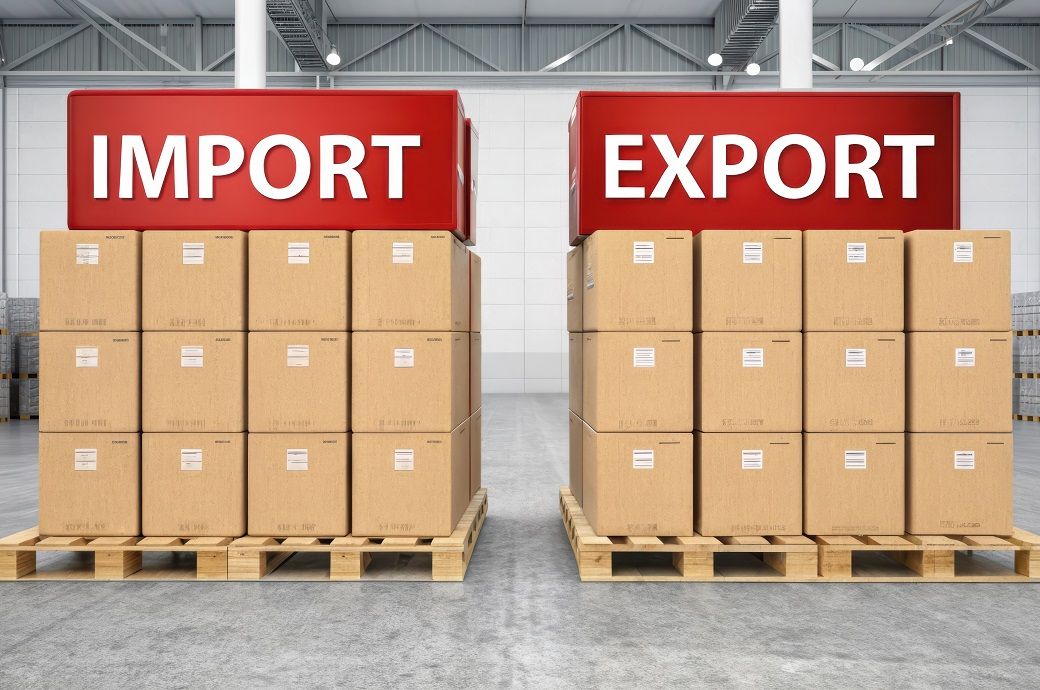The country’s foreign goods trade in yuan terms rose by 5.2 per cent YoY to 36.02 trillion yuan (~$5 trillion) in the first 10 months this year, with exports up by 6.7 per cent to 20.8 trillion yuan and imports up by 3.2 per cent to 15.22 trillion yuan, a GAC release said.
In terms of US dollars, the total value of China’s import and export in the first 10 months this year was $5.07 trillion—an increase of 3.7 per cent YoY. Exports were worth $2.93 trillion—an increase of 5.1 per cent YoY; imports were worth $2.14 trillion—an increase of 1.7 per cent. The trade surplus during the period was $785.27 billion—an increase of 15.8 per cent.
China’s foreign trade witnessed faster growth in October, with total goods imports and exports expanding by 4.6 per cent YoY in yuan terms compared to a 0.7-per cent YoY increase recorded in September.
The country’s foreign goods trade rose by 5.2 per cent YoY to 36.02 trillion yuan (~$5 trillion) in the first 10 months this year, with exports up by 6.7 per cent and imports up by 3.2 per cent.
During the same period, exports of labour-intensive products from China were worth 3.48 trillion yuan, up by 3.2 per cent YoY, and accounting for 16.7 per cent of the country’s total foreign trade volume. Among these, exports of clothing and clothing accessories were worth 932.75 billion yuan—up by 0.7 per cent YoY, and those of textiles were worth 829.52 billion yuan—up by 5.8 per cent.
In the first 10 months, the Association of Southeast Asian Nations (ASEAN) bloc was China’s largest trading partner. The total trade volume between China and ASEAN was 5.67 trillion yuan during the period—an increase of 8.8 per cent YoY, accounting for 15.7 per cent of the country’s total foreign trade volume.
Exports during the period to ASEAN were worth 3.36 trillion yuan—a YoY increase of 12.5 per cent; imports from ASEAN were worth 2.31 trillion yuan—a YoY rise of 3.8 per cent. The trade surplus with ASEAN was 1.05 trillion yuan—a YoY increase of 38.2 per cent.
The European Union (EU) was China’s second largest trading partner. The total trade volume between the two sides during the period was worth 4.64 trillion yuan—an increase of 1.2 per cent YoY, accounting for 12.9 per cent of the country’s total foreign trade volume.
Exports to the EU during the period were worth 3.04 trillion yuan—an increase of 3.5 per cent YoY; imports from the EU were worth 1.6 trillion yuan—a YoY decrease of 2.9 per cent. The trade surplus with the bloc was 1.44 trillion yuan—an increase of 11.6 per cent YoY.
The United States was the third largest trading partner. The total trade volume between both sides was worth 4.01 trillion yuan—an increase of 4.4 per cent YoY, and accounting for 11.1 per cent the total foreign trade volume. Exports were worth 3.04 trillion yuan—up by 4.9 per cent YoY; imports were worth 969.48 billion yuan—up by 2.9 per cent YoY. The trade surplus with the United States was 2.07 trillion yuan—up by 5.8 per cent.
South Korea was China’s fourth largest trading partner during the ten-month period. The total trade value between both sides was worth 1.91 trillion yuan—up by 6.7 per cent YoY, and accounting for 5.3 per cent. Exports were worth 855.67 billion yuan—down by 0.8 per cent YoY; imports were worth 1.05 trillion yuan—up by 13.8 per cent YoY. The trade deficit with South Korea was 198.74 billion yuan—up by 2.1 times.
During the same period, China’s total imports and exports with countries participating in the Belt and Road Initiative amounted to 16.94 trillion yuan—up by 6.2 per cent YoY. Exports to these countries amounted to 9.48 trillion yuan—up by 8 per cent YoY; imports from such countries were worth 7.46 trillion yuan—up by 3.9 per cent YoY.
Director of GAC’s department of statistics and analysis Lyu Daliang said the country is capable of achieving its full-year foreign trade target of improved quality and stable volume.
Fibre2Fashion News Desk (DS)







